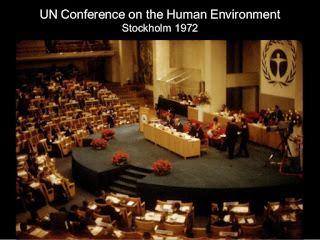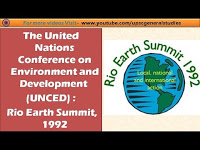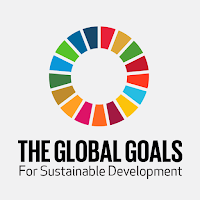– Gaylord Nelson
 The United Nations idealists who believe we can work globally to ensure environmental health have been working on this issue for over four decades. Momentum is increasing as more people join the effort and the cause is backed up with a growing body of more sophisticated science.
The United Nations idealists who believe we can work globally to ensure environmental health have been working on this issue for over four decades. Momentum is increasing as more people join the effort and the cause is backed up with a growing body of more sophisticated science.
 It took until 1992 for the UN to convene the Conference on Environment and Development dubbed “Earth Summit”. The two big victories realized at this meeting were
It took until 1992 for the UN to convene the Conference on Environment and Development dubbed “Earth Summit”. The two big victories realized at this meeting wereo Agreement to convene the Climate Change Convention with the objective to stabilize greenhouse gases. This agreement led to the Paris Agreement.
 At the 2002 “Earth Summit” (Also known as Rio +10) sustainable development was identified as the most important goal for all national, regional, and international institutions and states.
At the 2002 “Earth Summit” (Also known as Rio +10) sustainable development was identified as the most important goal for all national, regional, and international institutions and states.
 At the 2012 “Earth Summit” (Also known as Rio +20) the third international conference on sustainable development was hosted. During this conference, a resolution known as “The Future We Want” was reached. The heads of the 192 governments in attendance renewed their political commitment to sustainable development and their commitment to the promotion of a sustainable future. Key themes of this agreement were poverty eradication, energy, water and sanitation, health, and human settlement.
At the 2012 “Earth Summit” (Also known as Rio +20) the third international conference on sustainable development was hosted. During this conference, a resolution known as “The Future We Want” was reached. The heads of the 192 governments in attendance renewed their political commitment to sustainable development and their commitment to the promotion of a sustainable future. Key themes of this agreement were poverty eradication, energy, water and sanitation, health, and human settlement.
In 2015 with the dictates of “The Future We Want” completed, the international community set new specific goals: a set of 17 Sustainable Development Global Goals. The international community agreed to these 17 targets that were reachable and finite.
 In 2016 the United Nations met in Paris to discuss how the international community could work together in constructively responding to the scientific evidence that climate change was happening at an escalating and unprecedented rate. The member countries hammered out The Paris Agreement also known as the Paris Accord. Every member country signed this agreement except for Nicaragua (as they felt it was not ambitious enough) and Syria. The United States backed out of their agreement in June 2017 when President Trump cited that the international accord was not fair to the workers of the United States and that the US was carrying too much of the financial burden.
In 2016 the United Nations met in Paris to discuss how the international community could work together in constructively responding to the scientific evidence that climate change was happening at an escalating and unprecedented rate. The member countries hammered out The Paris Agreement also known as the Paris Accord. Every member country signed this agreement except for Nicaragua (as they felt it was not ambitious enough) and Syria. The United States backed out of their agreement in June 2017 when President Trump cited that the international accord was not fair to the workers of the United States and that the US was carrying too much of the financial burden.
This process has spanned more than four decades. A few steps forward followed by an occasional step back seems to be the current progression; however there is an international energy demonstrated at this conference that has not been seen before. The successes of the 2017 Ocean Conference are promising. People realize that collectively we need to roll up our sleeves, be ambitious and make the health of the Earth a top priority for future generations.







